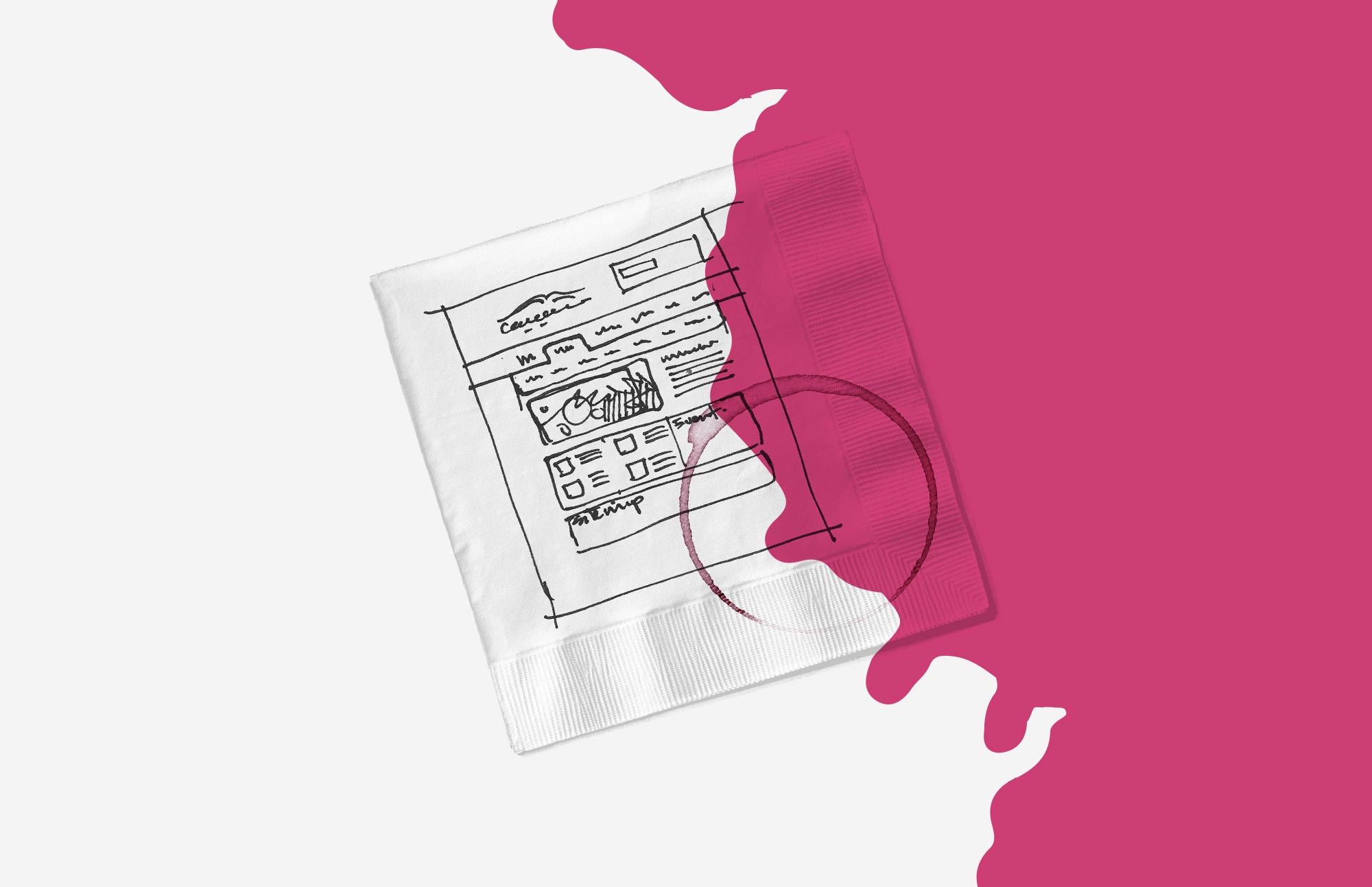Make this pretty, please!

A few weeks ago I attended a Designers & Geeks Meetup here in San Francisco and had the pleasure to experience a talk from Audrey Crane, a designer, and partner at DesignMap.
I was blown away from Audrey’s energy and humor while presenting her design-saving ideas. The room bursted into laughter several times and we all learned some good tricks. Oh, BTW she was 9 months pregnant during the presentation, so bonus points to her!
Audrey’s talk exposed a very common problem among designers, something that always makes things awkward and never generates good design outcome.
Receiving a napkin sketch from a client or coworker.
If you are a designer you surely know what I’m talking about, you know when someone comes to you saying something like this “Hey! Here is a layout solution for such and such, can you design it and make it look good?”
As much as their effort in solving their said problem is appreciated this is really just a shortcut that excludes the designer from the design process limiting his or her creativity merely to the execution.
“Design” is not a noun, it’s a verb. It’s the process that includes everything from defining user needs and concepting to prototyping and testing. A process called Design Thinking”
– Audrey Crane
Every professional has a process and a handful of knowledge that allows them to contribute their best to any given solution. That process gets short-circuited when they’re handed a literal or figurative napkin sketch. What the deliverer seems to be saying is:
“We don’t need your contribution, just make this pretty and we are good.”
Audrey has 7 techniques that will let the designer restart the design process, but these are my top 3 favorites:
3 Things
“Tell me 3 important things about this. Lets do a version that optimize for each…”
When presented with a napkin sketch, instead of rolling your eyes, get curious. Ask the who, what, why questions to find out where they are in the design thinking process. Here are some examples:
- What are the three most important things you are trying to accomplish with this napkin sketch?
- What are three words would you use to describe what is happening here?
- If you had to pick one word/idea to focus on which would it be?
- Do you think we can come up with three ways to show that one idea?
Ideally answering these questions will open a productive discussion that brings the design thinking process in alignment.
Re-Trace Their Steps
“I heard you say…”
This technique basically lets you play it back. Ask your napkin holder to describe the sketch and then repeat back to them what you heard.
You might even re-draw the sketch just as they described it. Both of these reflecting tactics shine a light on the requester’s thinking process and might prompt them to reconsider their assumptions, opening them to new approaches.
The Why-How Ladder
A Why-How ladder uses why and how questions to create a hierarchy of user needs and helps paint a much fuller picture. Why questions uncover more basic human needs (why will this product/service make me happy) and “how” question (How will this product/service makes you happy) reveal practical steps towards realizing that need.
Answers to “why” questions move up the ladder, while “how” questions move down the ladder.
Use this method with your client to reveal how his or her sketch reflects actual user’s needs and ways to meet those needs.
I hope this will help you in your design process and relinquish a bit of frustration that comes from being told to simply make something look pretty.
If you are curious to see the whole presentation deck, here it is on Slideshare and down below are other resources that highlight this topic.
Design is a Job by Mike Monteiro
Design Thinking by Thomas Lockwood
Gamestorming by Dave Gray